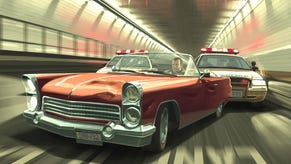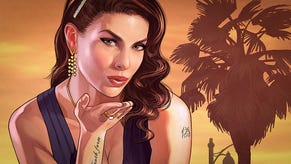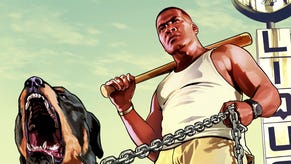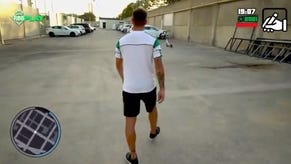Grand Theft Auto IV review
Finding Niko.
The world itself is smaller than the state-sized San Andreas, but locations have character. The kidney-shaped island that hosts Broker and Dukes - home to the airport in the east, a carnival, a fair amount of green-space and tree-lined avenues - is the aftermath of a collision of awkward terrain and an expanding population that scattered confusing sloped road junctions and incongruous architecture across its span, patrolled by the Russian mafia. The smaller Bohan, also accessible from the start, is a rougher northern relation, linked by massive bridges and home to an uneasy gathering of immigrant neighbourhoods and housing projects. Beginning the game in Broker, Dukes and Bohan allows for a diversity absent from the opening throes of San Andreas.
Heading west to Algonquin, there's an apparent bleakness, but only north of the game's equivalent of Central Park - a large green expanse, swollen and tunnelled through in places. Head south towards Star Junction, GTA IV's Times Square, and the streets and their occupants smarten, franchise shops and eateries cluster, framed by tall arches that climb above the mezzanine level where buildings start to form the skyscrapers that dominate the financial district beyond. There's a stronger police presence, too, because these people are worth protecting.
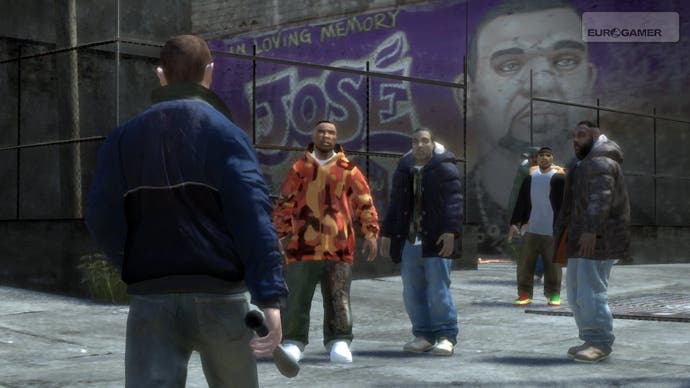
Star Junction itself fills your screen with neon - ads and outlets, like Pirate Music Store, Shark Credit Card ("Extortionate Value"), make-up billboards for Max Renda, spinning pharmacy signs and glitzier Cluckin' Bell restaurants, where you can quickly top up your health. It's clean, but dirty. It's a far cry from the decrepit Alderney to the west, a blue-collar spread of industrial buildings, housing projects, sagging telegraph poles and corrugated roofs pocked with holes, overgrown parks full of rusting cars, half-built houses overshadowed by the monstrous freeways and the skyline of Algonquin visible beyond, glistening with derision over the broken roads and the homeless shuffling along them. Wherever you are, incidental drama plays out all around you; fat cops chase bag-snatchers, and inattentive drivers bash into one another. It took us about 12 hours to unlock all the islands, by way of some mucking about, and as usual the rails are quietly oiled for you by long-standing strengths of GTA's design, like roads where there's just enough room to drive between columns of traffic without impediment.
Elsewhere, GTA had been doing joke websites for years (remember Kent Paul?), but GTA IV has an entire joke Internet, accessible through terminals and TW@ cafes, and home to email access, novelty sites and social portals like Love-Meet. You use the Internet to receive requests for exotic car thefts, and to entrap people. Similarly, you can dial 911 on your phone, so you can prank-call the cops and steal their cars, and search for people on their computers. Or you might be sent a photo on your phone to help ID a target. We don't feel guilty about imparting this, because GTA IV is rich enough that we can afford to fritter away a few of its very minor reveals.
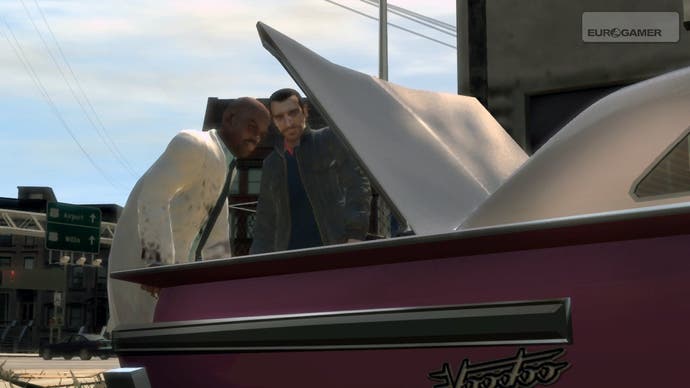
Theoretically, strong and innovative missions should coalesce from so much environmental variety, and the phone, web and physics innovations, but the best scenarios are down to the series' traditional strengths - solid driving controls and car handling, which encompasses a broader spectrum of grip and suspension, rather than relying on speed to do most of the differentiating - and the fact that you're more comfortable, manoeuvrable and secure in control of Niko than any of GTA's previous anti-heroes. By the time you unlock Algonquin, the game is in its stride; you rob a bank, assault entrenched mafioso and drug dealers in complex, multi-tiered environments, race to escape the police, and everything feels better for destructible scenery, variable weather and lighting conditions, detailed sight gags - like a precious coffin wiggling precariously out of the back of a hearse as you enact a bumpy escape - and the script variation when and if you have to try again.
The storyline that arcs from Broker to Alderney handles Niko's past and present with decent range and subtlety. The old mood-swing effect - relationships accelerating from cautious introductions to strong bonds and pivotal drama in just a few cut-scenes - is almost completely eradicated, and cut-scenes are improved by physical interaction and behavioural animation, and a clever script. Niko himself is quickly sympathetic - his moral latitude is rooted in horrible war stories, but he's warm-hearted - and imposing, and his influential relationships are with rounded individuals, albeit often in caricatures' clothing. Situations and developments are rarely contrived, as the dialogue lays the foundation for dramatic events and betrayal subtly, in a way that you can appreciate more when you see them a second time.


